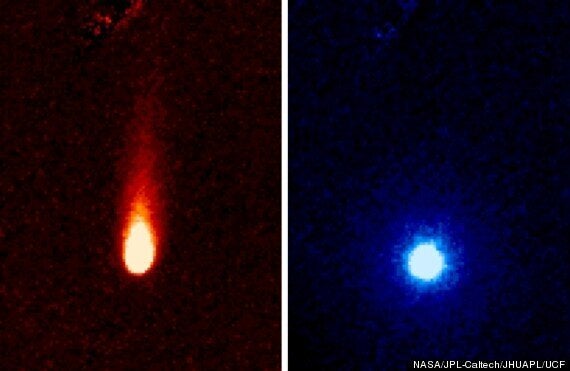It could be as bright as the full Moon when it passes Earth this November but Comet ISON is already producing quite a show.
New pictures taken by NASA's infrared Spitzer Space Telescope show a tail 186,400 miles long caused by the emission of 1 million kgs of CO2 and 54.4 million kgs of dust each day.
James L. Green, NASA's director of planetary science, said: "These fabulous observations of ISON are unique and set the stage for more observations and discoveries to follow as part of a comprehensive NASA campaign to observe the comet.

The image on the left shows rocky dust and the right shows CO2 'fizzing' off the comet
"ISON is very exciting. We believe that data collected from this comet can help explain how and when the solar system first formed."
The comet is due to pass within 732,000 miles of the surface of the Sun at 425,000 mph on the 28th November and could light up the night sky.
The reason is that the closer a comet comes to the Sun, the more the gas and dust inside it heats up and starts to burst free of its icy surface.
This creates a light-reflecting 'coma', or halo, which is incredibly bright and relatively large in the sky.
However this all relies on the comet not breaking up beforehand in which case it could all be a bit of a damp squib.
The last comet of note that was visible from Earth was C/2006 P1 in 2007. It was the brightest comet for over four decades.
The most famous comet is Halley's Comet which is visible every 75-76 years. It was last seen in 1986 and is due to pass again in July 2061.